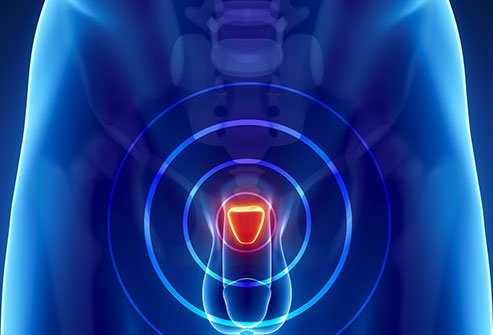What Are the First Signs of Prostate Problems?

The first signs and symptoms of prostate disorder usually include problems with urination. These problems can cause you to:
- Have the urge to rush to the washroom to pass urine
- Have urine that dribbles in drops
- Have a weak urine stream
- Have the urge to pass urine more often during the night
- Have difficulty or pain while passing urine
- Feel that the bladder has not been emptied properly even after urinating
- Get frequent pain or discomfort in your lower abdomen
- Have hematuria (blood in the urine)
- Have hematospermia (blood in semen)
- Erectile dysfunction
Depending on the underlying prostate problems, you may have other symptoms.
- If you have prostatitis, your symptoms may cause long-lasting pain or discomfort in your penis or scrotum, your belly, or your lower back.
- If you have bacterial prostatitis, you may not be able to evacuate your bladder completely. Signs of infection, such as fever, chills, or body aches, may be present.
- If you have Benign prostatic hyperplasia (BPH), you may feel the urge to urinate often during your night’s sleep. You may have urine with an abnormal color or odor. Urination or ejaculation may be painful.
Please consult your doctor if you experience any of the signs and symptoms to avoid the worsening of the prostate problems.
What are the most common prostate problems?
The three most common prostate problems are:
Benign prostatic hyperplasia (BPH): BPH is the noncancerous enlargement of the prostate. It is the most common problem in men, and it is a part of the normal aging process. Factors like changes in hormone levels and fibrosis may play a role in causing BPH. Fibrosis is the thickening and stiffness of the organ wall.
Prostatitis: Prostatitis is the inflammation (swelling) of the prostate. Though it can affect men of all ages, it is more common in men younger than 50 years. It is of two types:
Bacterial prostatitis: Bacterial prostatitis can be either acute or chronic. Diagnosis usually involves detecting white blood cells and bacteria in the urine with laboratory urine tests.
- Acute bacterial prostatitis: The symptoms of acute bacterial prostatitis appear suddenly and usually subside with antibiotic therapy.
- Chronic bacterial prostatitis: In chronic bacterial prostatitis, the symptoms build up gradually and stay for a couple of weeks.
Chronic prostatitis (also known as inflammatory chronic pelvic pain syndrome): Doctors do not know the exact cause of chronic prostatitis. The diagnosis of chronic prostatitis is done when there are symptoms of prostatitis but no signs of infection. Bacteria are absent in urine tests.
Prostate cancer: Prostate cancer is the most common cancer amongst men in America. Having your father or brother with prostate cancer makes you more likely to develop it. High-fat diets also put you at risk for prostate cancer.
How are prostate problems diagnosed?
Your doctor diagnoses prostate problems based on the following:
Evaluation of your medical and family history.
A physical exam, including a digital rectal exam of your prostate. The doctor inserts their lubricated finger in the prostate to feel its texture.
Urine tests: The sample of urine is checked under a microscope to check for any signs of infection.
Blood tests: Complete blood count (CBC) is done to find out if there is an infection. Levels of prostate-specific antigen (PSA) test is done to check if there is prostate cancer.
Cystoscopy: A tube-like camera is inserted through your urethra to reach into the bladder. This helps the doctors visualize the inside of the bladder with the help of images on the screen.
Urodynamic studies: This test involves visualizing the pressure changes in the lower urinary tract while you urinate.
Ultrasound: This test involves moving a probe (transducer) over your belly or inserting the same into your rectum to check for any abnormalities in the prostate.
Prostate biopsy: Doctors surgically remove a small piece of your prostate by making a few small cuts in your abdomen. The prostate sample is sent into the laboratory to check for the presence of cancer cells.
Magnetic resonance imaging: This may be required if the sonogram shows a heavy prostate and the PSA values are higher than normal.
